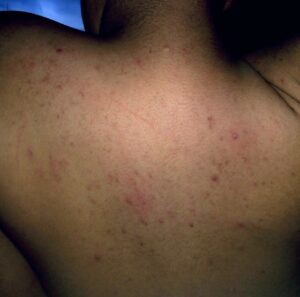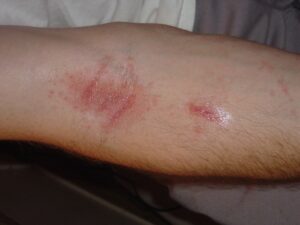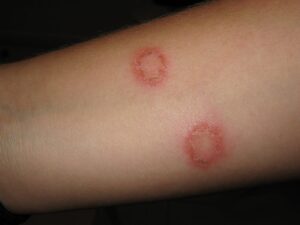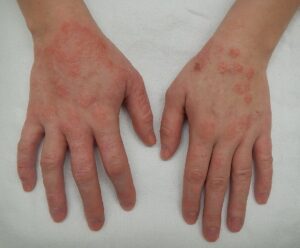Explore 13 common reasons for red spots on the skin, identify the causes, and find solutions for clearer, healthier skin with expert insights.
Red spots on the skin can be attributed to various causes. Dermatitis may arise from irritating substances, ringworm from fungal infections, purpura from burst blood vessels, and autoimmune conditions that trigger rashes. While some spots may resolve on their own, others require treatment. Delve into the 13 potential causes of red spots, understand if they warrant concern, and discover when immediate medical attention is necessary.

Skin spots manifest differently across various tones. Acne may appear red on lighter skin, while dark spots may be prominent on darker tones.
Sun-induced red spots, known as “heat rash” or miliaria, result from blocked sweat glands under the skin, leading to small, itchy, or painful red bumps. Typically found in skin folds and sweat-prone areas such as the armpits, chest, back, arms, and groin.
Living in hot climates, excessive sweating, or prolonged bed rest increases the risk of heat rash. Treat it by cooling the skin with baths, cold compresses, and loose clothing. Avoid thick moisturizers that trap heat.
Heat rash usually improves within days, but if the skin is injured, it may lead to infection. Severe cases may require oral or topical antibiotics to alleviate pain and clear the infection.
Contact your healthcare provider if you observe signs of infection, such as a whitish color over the heat rash, flaking skin, or pus-like discharge.
Cherry Angiomas
Cherry angiomas are common skin growths appearing as round red or purple spots, often on the torsos of adults aged 30 and older. While they may change in size and bleed, they are not cancerous.

Diagnosis involves a provider’s examination, and treatment is typically unnecessary. Removal options, such as lasers or liquid nitrogen, can be explored, usually causing minimal discomfort.
Contact Dermatitis
Red spots can result from contact dermatitis triggered by irritants or allergens. It manifests as an itchy rash with bumps, leading to swollen, dry, flaky skin anywhere on the body.

Two types exist:
Irritant contact dermatitis stems from a weakened skin barrier reacting to substances.
Allergic contact dermatitis results from an abnormal immune response to allergens.
Identifying the cause isn’t always straightforward, and a patch test may be needed. Typically resolving in weeks, avoiding the triggering substance is key. Treatment involves OTC hydrocortisone cream or prescription antihistamines for itching relief.
Ringworm (Tinea Corporis)
Red spots may stem from infections like ringworm (tinea corporis), a common fungal skin issue. It manifests as a circular rash with raised edges, causing flaking without much pain.

Ringworm can affect any body part but is frequently found on arms and legs. Highly contagious, it spreads easily through skin contact, touching contaminated surfaces, or contact with pets carrying the fungus.
Diagnosis relies on visual examination. Treatments involve over-the-counter or prescription antifungal creams. Neglect may prompt spreading, requiring oral antifungal drugs for resolution.
Atopic Dermatitis (Eczema)
Red spots may result from chronic skin conditions like atopic dermatitis (eczema), causing itchy, scaly rashes, often in skin folds. It’s prevalent in children under 5 and diagnosed through a physical exam.
Treatment involves topical steroids, antihistamines, or oral steroids for severe cases. Keeping the skin moisturized is recommended to minimize flare-ups. Hot or long showers and irritating skincare products can exacerbate redness and itchiness in people with eczema.




